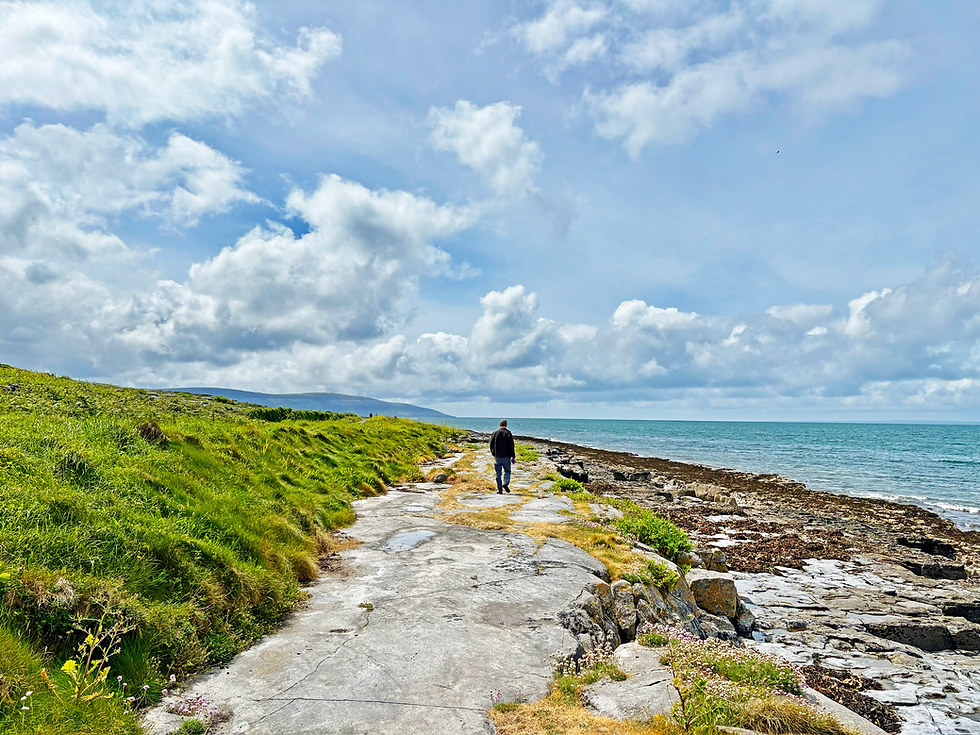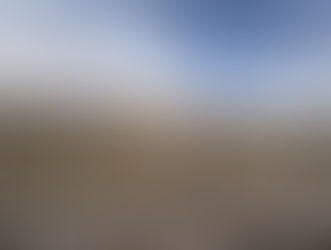How it began: Stumbling upon a stony, magical place called the Burren
- Warren Berger

- Jul 11
- 4 min read
Updated: Aug 21

A few years ago, while cleaning out my parents’ house after the death of my father, I found a small framed picture of a pub bearing the sign “Curtin’s Roadside Tavern.” I was intrigued because my late mother’s maiden name was Curtin—her father, John, came to the U.S. in the early 1900s, leaving behind a struggling farm in western Ireland—though I’d never heard anything about a tavern. I looked up the place online and sent an email to the owner, Peter Curtin, who wrote back that he didn’t think we were related, but that I was nevertheless welcome to come visit him at the pub anytime.
That I did, on a subsequent trip to Ireland with my wife, Laura, in 2018. In a rental car, we located the Roadside Tavern in a small Ireland town called Lisdoonvarna, long known as a spot where Irish bachelors would go to seek help from the town’s resident matchmakers (a couple of the matchmaking shops are still there). When we entered the tavern, a stocky man with a head of thick white hair emerged from behind the bar.
Peter Curtin, in his early 70s, had spent much of his life in this tavern. Upon our arrival, he gave my wife and me a warm welcome and a couple of pints. Before long he was spinning tales of the Curtin clan (I am descended from a long line of scribes, it seems), as well as the O’Brien and Kelly clans (my wife was tickled to learn that my forefathers had no doubt worked for her royal ones).

At some point, Peter got to the subject he really wanted to talk about. He explained that he was the founder of the “Burren Tolkien Society,” dedicated to informing the world that JRR Tolkien’s creation of mythical Middle Earth, featured in his Lord of the Rings books, was inspired by a real-life place just a short hop from Curtin’s pub. It was a place, Peter Curtin told us, with mystical and magical powers; and it had inspired not only Tolkien but a litany of great writers and artists—including the poets W.B. Yeats and Seamus Heaney. The tourists knew little of this locale, but the real Irish, and especially Irish artists, treasured it.
“Don’t miss the Burren”
Called “the Burren”—a version of a Gaelic word for “stony place”—this place was not on our list of sites to visit during this trip to Ireland. But Curtin insisted we not miss it on our drive from Lisdoonvarna north to Galway, giving us directions on which narrow roads to take.
Before long on our drive, it seemed that everything around us, as far as the eye could see, had turned to stone. We pulled the car to the side of the road at a spot where we saw an opening in a stone wall. I climbed through that opening and I felt as if I’d stepped onto the moon.

Spanning a 150-square-mile region on the western coast of Ireland’s County Clare, the Burren encompasses several breathtaking mountains, with a six-square-mile national park at its center. The terrain is mostly formed from a deep bed of limestone, which glows near-white when the sun comes out. Many thousands of years ago, this was an enclosed tropical sea near the equator, swimming with sea creatures. As the water receded over time, the shells of those creatures compressed to form the limestone floor and mountains. The Irish rain carves intricate designs in the alkaline rock.
From the crevices and cracks in the limestone grow some of the world’s rarest flowers. It can be startling to come upon splashes of bright blue and purple against the limestone, which, itself, constantly changes color tones throughout the day.
The deeper you venture into the heart of the Burren, the further back in time it takes you. Stone forts and tombs, thousands of years old, are still standing, undisturbed. Think of Stonehenge, then imagine a hundred different Stonehenges, of varying sizes and shapes, built by Stone Age farmers to mark off territory or to honor the dead.
In addition to the built structures, there are thousands of oddly-shaped boulders, known as “erratics”—they sit alone in otherwise-open spaces, carried and dropped there fifteen thousand years ago by glaciers.
And then there are the post-winter temporary lakes called “turloughs” that dot the landscape. They dry up by the end of summer

It struck me that the place was like an open-air museum with no security guards or rope lines to protect all the megalithic monuments. Then again, there seemed to be few visitors to this museum—in fact, on the afternoon my wife and I first wandered into the park section of the Burren we saw not a single living human among the birds, plants, and erratic rocks. We didn’t get very far on that first foray; we were tourists following a schedule and this strange place wasn’t on it. We took a few pictures of wildflowers sprouting from the rocks, went back through that same opening in the wall, and left.
When I got back home to the U.S., I couldn’t get the Burren off my mind. I was particularly intrigued by the possibility that this place seemed to have an inspirational effect on famous writers and artists. I wanted to investigate that possibility and see if I could experience some of that inspiration myself. So I decided I would return to the Burren—and spend enough time there to truly immerse myself in its magic.

























Comments